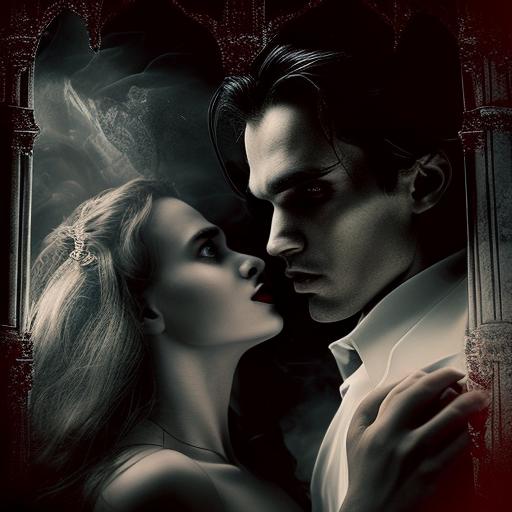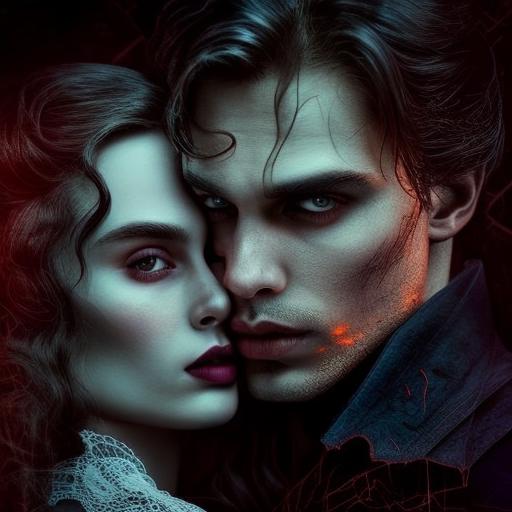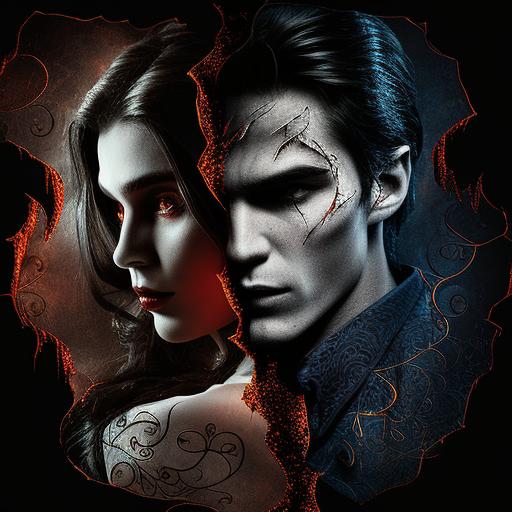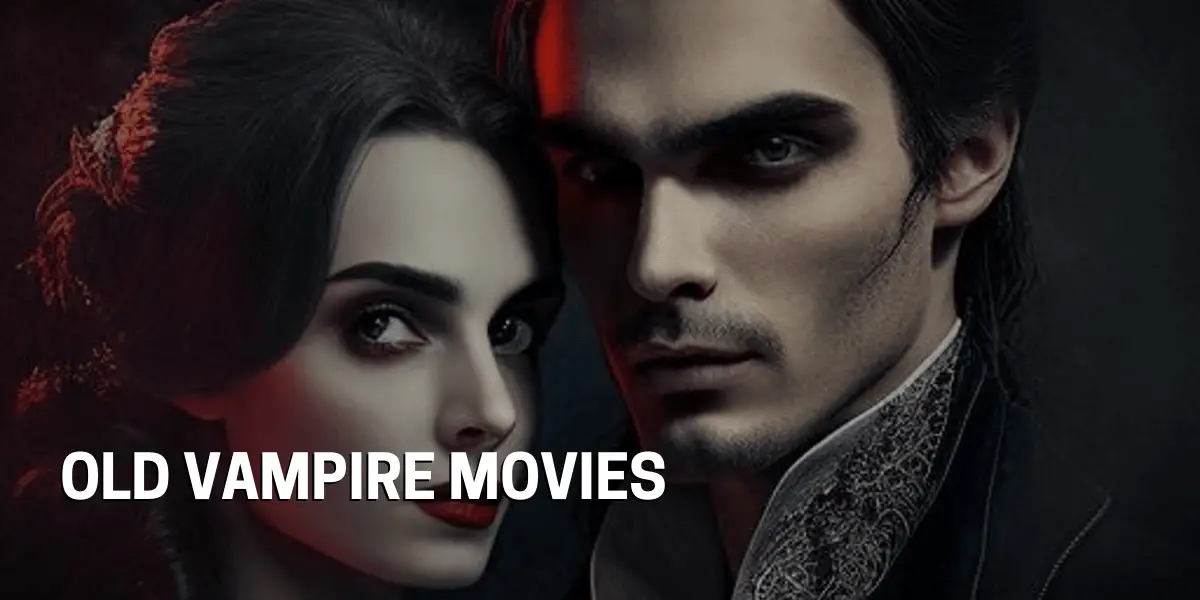Vampire Films from the Past
One of the earliest vampire films, Nosferatu, was released in 1922 and was based on Bram Stoker’s classic novel Dracula. The film, which starred Max Schreck as the vampire Count Orlok, was a cult classic and set the tone for many of the vampire films that followed.
In 1931, Dracula was released, starring Bela Lugosi as the infamous vampire. This version was the first to bring the vampire to life on the silver screen, and it remains one of the most popular vampire films of all time. It was also the first to portray the vampire in a more sympathetic light.
Other notable vampire films from the past include The Lost Boys (1987), The Hunger (1983), and Bram Stoker’s Dracula (1992). Each of these films has helped to shape the vampire genre and has had a major impact on popular culture.
Of course, the impact of vampire films from the past is not limited to the silver screen. Vampire-themed television shows, books, and video games have been around for decades and have helped to keep the genre alive. The vampire has become an iconic figure in popular culture, and its influence can be seen in everything from fashion to music.

History
The vampire genre has its roots in the classic Universal films, with Bela Lugosi’s iconic performance in the 1931 Dracula setting the standard for many films that followed. Subsequent films such as The Lost Boys, The Hunger, and Bram Stoker’s Dracula expanded the genre, introducing new elements and themes.
But it wasn’t just the silver screen that was influenced by vampire films, with television shows, books, and video games all taking cues from the genre. The cultural impact of vampire films has been vast, inspiring fashion and lifestyle trends across the world.
From vampire-themed Halloween costumes to the use of vampire tropes in popular music, the vampire has become an integral part of popular culture. But what is it about these films that has kept them so popular for so long?
Perhaps it is their ability to tap into our deepest fears and desires. Or maybe it is the unique glimpse they offer into the darker side of life.
Popular Titles
How can you tell a vampire story without mentioning some of the most popular titles? From the 1922 classic Nosferatu to the modern Twilight, vampire films have been a part of film history for over a century, and their influence on popular culture is undeniable.
Among the most iconic of these films is 1931’s Dracula, which introduced the world to the legendary vampire character. Following this, The Lost Boys (1987), a cult classic about a group of teenage vampires living in Santa Cruz, California.
Interview with the Vampire (1994), a dark fantasy film based on Anne Rice’s novel of the same name, both made their mark on the genre. Finally, 2008’s Twilight, a romantic vampire film based on Stephanie Meyer’s novel, cemented the vampire genre’s place in the modern age.
Interview with a Vampire
The film is based on Anne Rice’s 1976 novel of the same name and follows the vampire duo Lestat and Louis as they navigate their immortal lives. It is a dark exploration of the vampire genre, and its success led to two sequels and an array of spin-off media.
The film’s impressive cast and direction, combined with its intriguing story, made it a hit with audiences. Critical praise was earned due to its complex themes and characters. It may not be as iconic as other vampire films, such as Bram Stoker’s Dracula, but is certainly an important part of the vampire movie genre’s history.
Bram Stoker’s Dracula
The iconic novel tells the story of Count Dracula, a vampire who moves from Transylvania to England to prey on the living. It has had a huge impact on vampire literature and popular culture, inspiring dozens of film, television, and stage adaptations.
The novel is also well-known for its vivid descriptions of Gothic settings, its complex characterization, and its themes of good versus evil.
This combination of elements has made it a classic of the genre.

Nosferatu
Nosferatu is one of the earliest and most iconic vampire movies of all time, released in 1922 and directed by F. W. Murnau. The story follows a real estate agent, Hutter, who is sent to the remote Transylvanian mountains to sell a castle to the mysterious Count Orlok.
This expressionist horror film is an early example of the expressionist style, a cinematic movement which sought to convey emotion and meaning through the manipulation of light and shadow.
Nosferatu has left an indelible legacy as one of the most iconic vampire movies of all time, inspiring countless other films, TV shows, and books.
This film has become iconic for its vivid descriptions of Gothic settings, its complex characterization, and its themes of good versus evil.
Common Themes
It’s no mistake that vampire movies from the past are full of captivating themes. From the power of love to the struggle between good and evil, these movies often sought to explore the dichotomy between mortality and immortality.
Love can be a powerful force in these stories, acting as both a means of salvation and destruction for the vampire’s existence. The struggle between good and evil is ever-present in these movies, as the protagonists must decide between choosing a path of light or darkness.
Mortality and immortality are also a prominent theme in these stories, as the protagonists must determine which life they would rather live. Redemption is also a common theme, as the protagonists often find a way to redeem their past transgressions.
Gothic Horror
How Gothic Horror has been captivating audiences for centuries. It is a genre of horror that typically incorporates elements of the supernatural and focuses on the dark, mysterious aspects of our unknown world. Gothic Horror often features stories that explore themes of death, doom, and destruction, as well as forbidden love and betrayal.
It is also known for its atmospheric settings, such as dark castles, haunted forests, graveyards, and caves. This genre has been used to delve into the psychological and emotional depths of the human experience and has been used as a form of social commentary.
From the power of love to the struggle between good and evil, these movies often sought to explore the dichotomy between mortality and immortality, and the power of redemption.
It is no wonder why Gothic Horror has been captivating audiences for centuries.
Romanticism
The vampire movie genre has long been captivating audiences with its romantic allure. From exaggerated sensuality to a dark, gothic aesthetic, these films have a certain charm that keeps viewers enthralled.
They are often filled with mysterious plotlines and intriguing mysteries that fuel their romantic interest. Whether it’s the forbidden love between a vampire and a human or the power of redemption, these films explore the themes of death, doom, and destruction.
The supernatural elements featured in these movies are used to delve into the psychological and emotional depths of the human experience. They often act as a form of social commentary, providing an escape from the mundane.

Supernatural Elements
Legends about vampires have been passed down for generations, with their origin stories rooted in folklore and superstition. Vampires are usually viewed as undead creatures that feed on the living, often seen as a curse.
Immortality is often portrayed as a lonely and despairing way of life, one that has had a significant impact on modern culture. Even today, vampires are still seen as mysterious, powerful, and dangerous creatures.
Impact on Modern Culture
In recent years, classic vampire movies have become a major part of pop culture, with references to these films popping up in all sorts of mediums. From TV shows to books to video games, vampires have become a regular fixture in modern culture. These references often take the form of subtle nods to the original films, such as a character wearing a cloak reminiscent of vampires from the classic movies, or an homage to a scene from one of the movies.
These cultural references are a testament to the lasting legacy of classic vampire movies. They remind us of the impact these films have had on modern culture and keep the classic stories alive, allowing new generations of fans to enjoy them.
Cultural References
Vintage vampire films have become a major part of pop culture, with references to these films seen in books, comics, video games, and television shows. Icons from these classic films have transcended generations, inspiring fashion and music, and even inspiring other films.
Perhaps the most resonant theme of classic vampire films is the idea of love, death, immortality, and power. From the earliest vampire films, these themes have been explored and examined with a unique perspective. Whether it’s the exploration of romantic love in Bram Stoker’s Dracula, or the power struggle between vampires and humans in Twilight, these themes have been at the core of classic vampire films.
These classic films have also left an indelible mark on other genres, such as horror and science fiction.
Influences on Film Genres
From their roots in 19th century Gothic horror novels, to their exploration of the darker side of human nature, these films have captivated audiences with their unique blend of suspense and romance.
In the mid-20th century, a cultural shift towards more progressive and socially conscious themes caused a surge in the production of retro vampire films. This shift was in part driven by the emergence of horror films such as Psycho, which explored more complex and psychologically driven themes.
The advancement of special effects technology in the late 20th century allowed filmmakers to create more realistic and visually stunning vampire films. From the first vampire films, these films have become increasingly sophisticated, with films such as Blade and Interview with the Vampire pushing the boundaries of the genre.
Retro vampire movies had a huge impact on audiences, as they provided a unique perspective on the vampire mythology and explored the darker side of human nature. Audiences were captivated by the suspenseful atmosphere, and the stories of love, death and immortality that these films explored.
This impact has resonated for generations, inspiring fashion, music, comic books and video games, as well as inspiring other films. In addition, these classic films have also influenced other genres, such as horror and science fiction, creating a lasting legacy in film history.
Impact on Literature
When it comes to vampire movies from antiquity, the impact they have had on literature, and the culture at large, cannot be overstated. From the 19th century Gothic horror novels that influenced the first vampire films, to the more progressive and socially conscious films of the mid-20th century, these films have captivated audiences with their unique blend of suspense and romance.
In addition, the advancement of special effects technology allowed for more realistic and visually stunning vampire films that further pushed the envelope.
Retro vampire movies have been instrumental in shaping the horror and fantasy genres, inspiring fashion, music, comic books and video games.
As a result, these films have captured the imaginations of generations of fans.
Conclusion
The age-old fascination with vampires has been around for centuries and remains as strong as ever. From the gothic horror novels of the 19th century to the modern, progressive vampire films of the mid-20th century, vampire movies have captivated audiences with their unique blend of suspense and romance.
This combination of horror and romance has allowed these old vampire movies to remain a genre of their own, with new films often paying homage to the classic films that gave birth to the genre. The advancement of special effects technology has allowed for more realistic and visually stunning vampire films that further push the boundaries of the genre.
Old vampire movies have been instrumental in shaping the horror and fantasy genres, inspiring fashion, music, comic books, and video games.
They have captivated the imaginations of generations of fans and continue to be a source of fascination and entertainment for movie-goers of all ages, making them an important part of cinematic history.
FAQs
What is the earliest vampire movie?
Why are vampires so popular? From the gothic horror novels of the 19th century to the modern, progressive vampire films of the mid-20th century, vampire movies have captivated audiences with their unique blend of suspense and romance. One of the earliest vampire films, Nosferatu, was released in 1922 and quickly became a cult classic.
The German silent film follows the traditional conventions of vampire folklore, as Count Orlok preys on the inhabitants of a small town. While the advancements of special effects technology has allowed for more realistic and visually stunning vampire films, the classic films remain a genre of their own, often inspiring fashion, music, comic books, and video games.
Are there any modern vampire films?
We’ve all heard tales of the undead, from Bram Stoker’s Dracula to the modern vampire films of today. While the original vampire films of the early 20th century revolved around classic horror tropes such as dark castles, mysterious creatures, and damsels in distress, recent vampire films have taken a more progressive approach.
The modern vampire film genre has seen a resurgence in popularity, with films like Blade (1998), Twilight (2008), and Let the Right One In (2008) gaining both critical and commercial success. These films offer a fresh take on the vampire mythos, featuring complex storylines and characters that explore human emotions, motivations, and relationships.
In addition, modern vampire films tend to have higher production values, with improved visual effects and realistic depictions of vampires. It’s clear that vampire films still have a lot to offer audiences, and with more innovative stories being told every day, the genre is sure to remain a staple of cinema for years to come.
Are vampire movies based on true events?
While some stories may have been inspired by true events, there is no definitive answer. Evidence suggests that vampires were once believed to be real, such as ancient burial sites that contain stakes and other objects believed to ward off vampires.
It’s clear that vampire movies have evolved since the early 20th century, with modern films offering a more progressive take on the vampire mythos. Complex storylines and realistic depictions of vampires continue to captivate audiences around the world.
How have vampire movies changed over time?
It has been centuries since the first recorded vampire tale was told, yet the fascination with these creatures of the night has only grown over time. From the early gothic horror films of the early 20th century to the modern fantasy films of today, vampire movies have seen a major transformation.
The themes of these films have shifted from horror and suspense to romance and adventure, and special effects and technology have been used to bring the supernatural elements to life.
From classic vampire tales like Bram Stoker’s Dracula to recent hits like Twilight and The Vampire Diaries, vampire movies have come a long way in their evolution. The most popular vampire films have been those that have embraced the complexity of the vampire mythos and have been able to offer fresh takes on the genre.
The lasting power of vampire tales is a testament to the timelessness of their appeal.
v. What are some of the most popular vampire films?
When it comes to vampire movies, there are some classics that have stood the test of time. Bela Lugosi’s 1931 classic Dracula is widely considered to be the first major vampire movie, and its influence can still be seen in modern vampire films.
The 1992 horror comedy Buffy the Vampire Slayer is another fan favorite, and its success spawned a cult following. The Twilight saga, released between 2008 and 2012, has become one of the most popular vampire franchises.
These films have captivated audiences for decades, yet the question still remains: why are these particular vampire movies so beloved?

